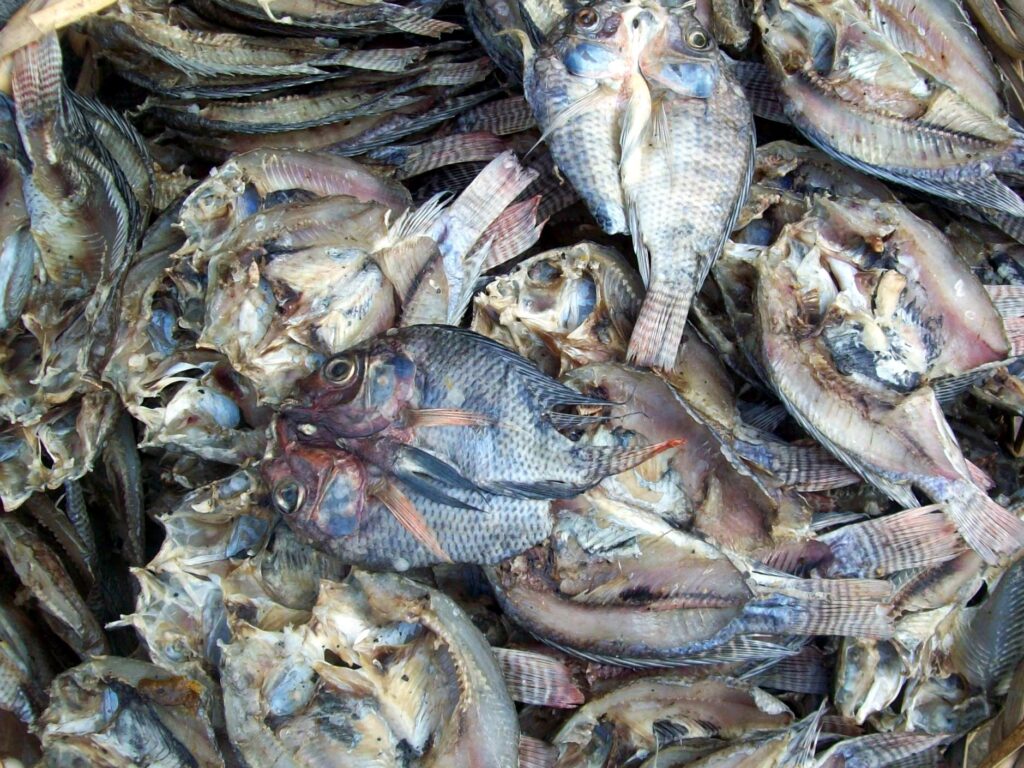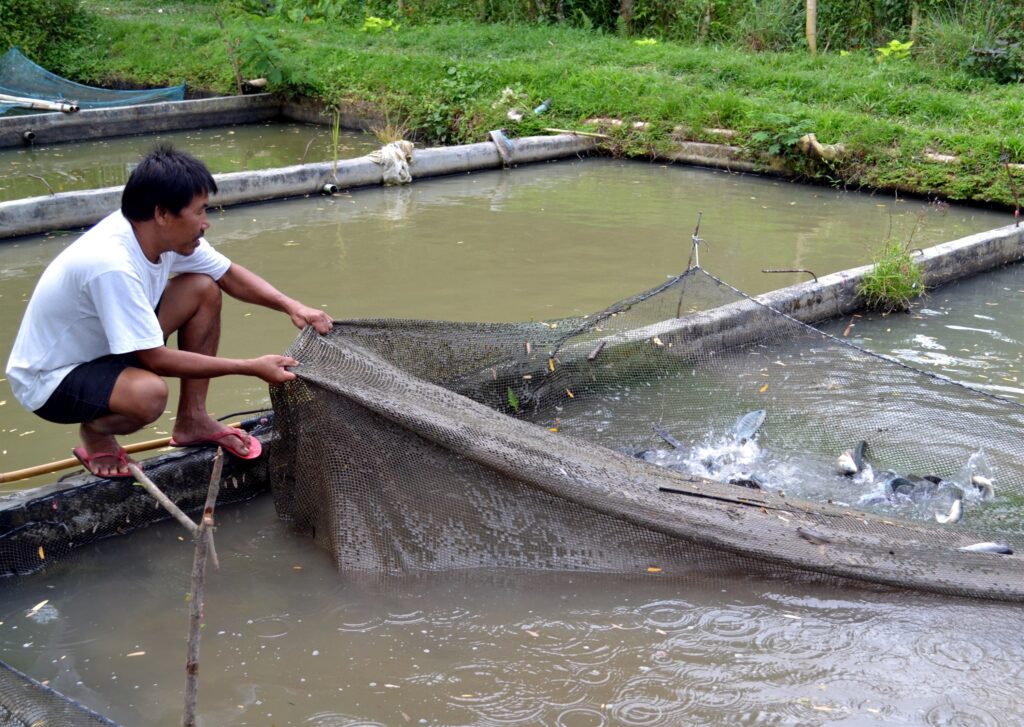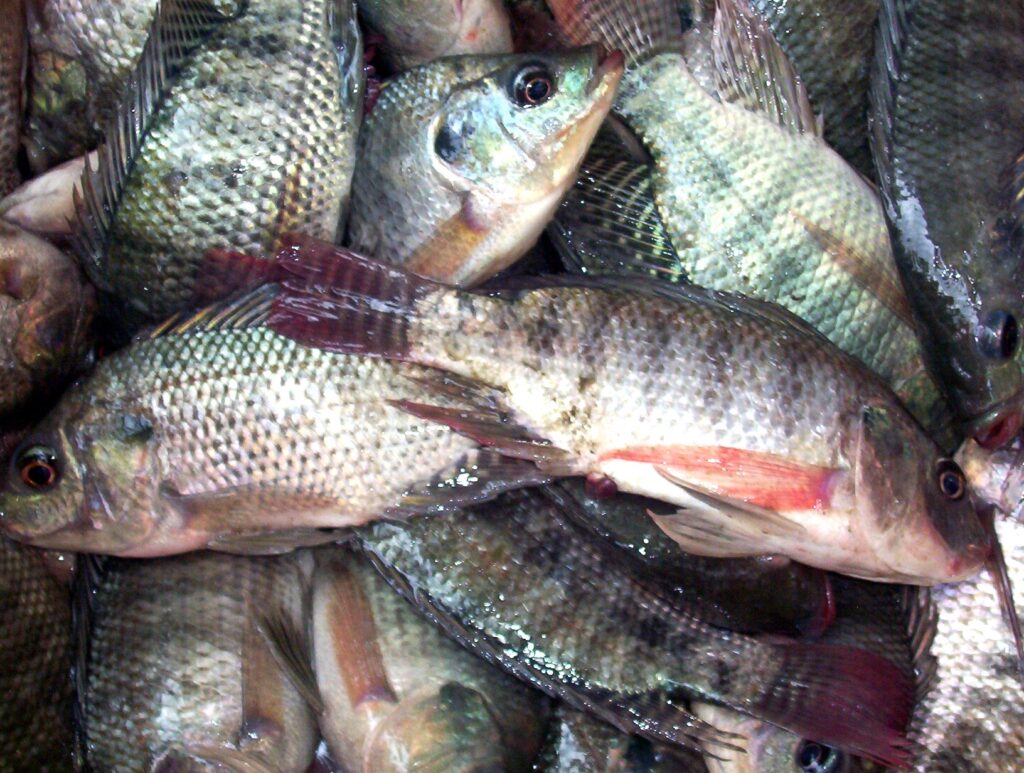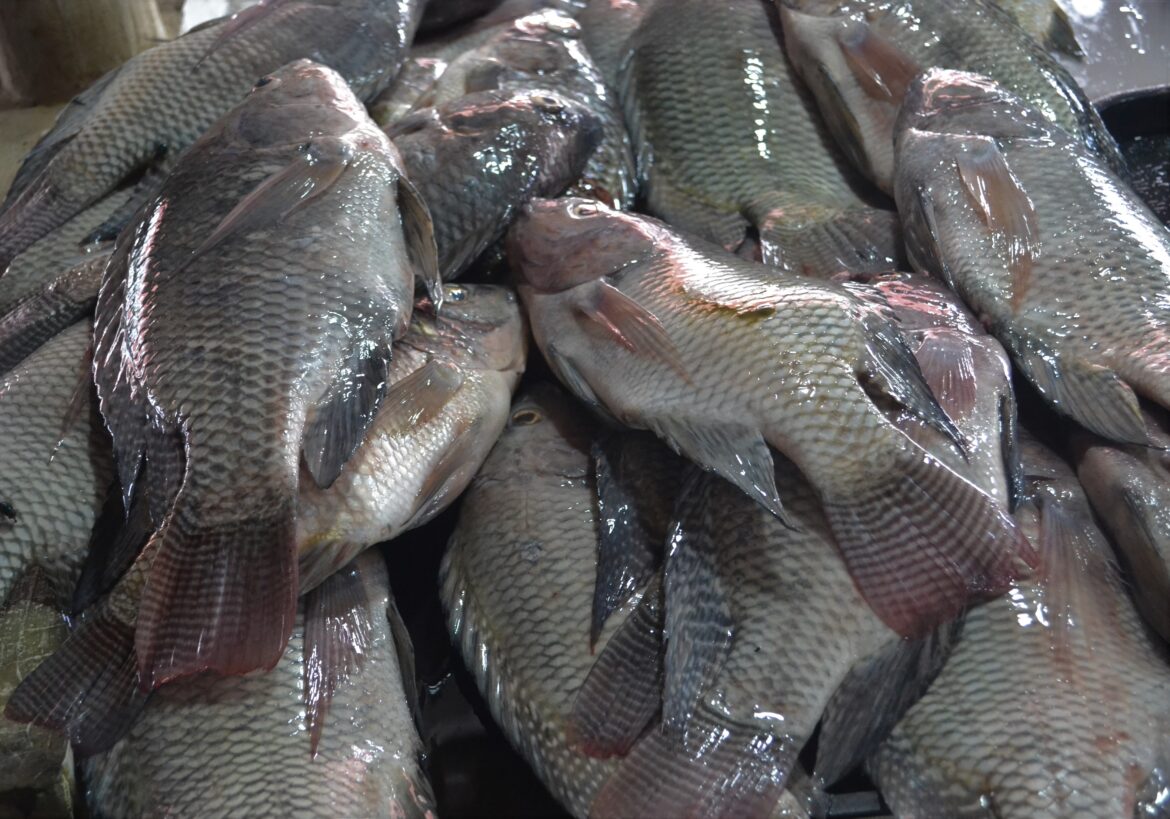Text and Photos by Henrylito D. Tacio
The coronavirus disease 2019 (COVID-19) has adversely affected many Filipinos. No one is spared as the disease is no respecter. Whether a person is rich or poor, he or she can be infected with the dreaded virus.
As the country continues its fight against the COVID-19 pandemic, there is an urgency to address the needs of the communities to have a stable and sustainable protein source. Pork, the most readily available source of meat, is beyond the reach of most Filipinos as the country is also suffering from African swine fever.
Thus, the most practical way of addressing the protein needs of Filipinos is through fish, the second staple food. Farmers, who are also greatly affected by the pandemic, can increase disposable income by raising tilapia in their backyard.
This is what the Philippine Council for Agriculture, Aquatic and Natural Resources Research and Development (PCAARRD) had in mind when it launched the Backyard Tilapia Farming Project under component 3 of the GALING-PCAARRD Kontra COVID-19.

Dried tilapia 
Harvesting tilapia
“The project is designed to improve the capacities of the poor to develop and implement livelihood activities during the post lockdown period,” PCAARRD said in its information bulletin No. 109/2020. “By doing so, the project aims to ensure that the poor will be able to address their basic food needs in terms of fish protein requirement, tilapia being considered as the ‘aquatic chicken’ in aquaculture.”
In addition, the project wants to promote environment-friendly culture techniques for tilapia farming, specifically on growing the fish in earthen ponds and on the minimal use of commercial feeds.
Ten fisherfolk households from Laguna and another ten from Batangas were selected as backyard tilapia farmer cooperators. Those selected have 100-400 square meter ponds with enough supply of water year-round, either coming from a river, stream, deep well, or irrigation canal or from rainfall during the wet season. They also agreed to undergo tilapia culture and processing training.
Actually, the project was patterned after the former Philippine Council for Aquatic and Marine Research and Development (PCAMRD) and the PLAN-Philippines project called Fish for Every Family.
“The (current) project aims to emulate the success of establishing over 400 tilapia fishponds varying in size from 50 to 200 square meters from 2004 to 2006 in five poor provinces covered by PLAN-Philippines,” the bulletin explained. “These are Isabela, Pangasinan, Oriental Mindoro, Southern Leyte, and Western Samar.”
The bulletin provides step-by-step methods of tilapia grow-out culture in a fishpond. “Tilapia farming in ponds is a very popular method,” it stated. “A pond is a small area of still, fresh water, and no more than 1.8 meter deep.”

Site preparation: The pond site should be thoroughly cleared of all the trees and bushes, including their roots. No wooden materials should be left because these will rot and cause leaks. The fishpond bottom is sun-dried before the actual start of the culture period.
Pond excavation and dikes construction: The excavation work within the area marked for the pond bottom can be carried out either manually or mechanically. Pond construction becomes economical if earthen dikes are made around the pond using the excavated soil from the pond bed.
Dikes must be well compacted to make them stable, and the top should be flat to render them accessible to small vehicles when needed. It is recommended to grow short, creeping grass on the top and sides of the dike. Trees are not desirable since shade inhibits the productivity of the pond.
Water inlet structure: For small ponds, the best inlet structure is polyvinyl chloride (PVC) pipe of about 10 centimeters in diameter with a control tap and a screen basket. The downstream end of the pipe should be 30-40 centimeters above the water level. A sluice is also suitable for this purpose, especially for larger ponds.
A screen is also fixed to check the entry of undesirable fishes and other aquatic organisms. The pond elevation should be sloped to where the catch basin (a square concrete) is located. This serves as a catch area during pond draining.
Maintenance and repair: Earthen dikes are susceptible to weathering and need a period of inspection. Paying attention to and fixing minor damages regularly helps avoid costly repairs later on.
When repairing gates and screens, check all gates and pipes for broken slabs and parts. Repair screens to prevent predators and pests from entering the pond system. When repairing dikes, check all dikes for leakages and seepages.
Pond preparation: This is the first step towards ensuring better production of tilapias in ponds. The pond bottom should be compacted and levelled.
Pond drying: It is recommended to dry the pond bottom until the soil cracks and until the soil is firm enough to hold one’s weight without sinking. This is to eliminate undesirable species and predators, oxidation of harmful chemical substances, and mineralization of organic matter. It is necessary to remove harmful chemicals, for these will adversely affect tilapia growth and survival.
Pond fertilization: Either inorganic or organic fertilizers such as manure, compost, or even vermicast may be used. The nutrients and organic matter content of manure helps increase the water holding capacity of the soil, decrease the rate of evaporation, and increase enzymatic activity. All of which increase fertility and yield.
Fertilizer application by broadcasting: In applying inorganic fertilizers, it should be dissolved in buckets containing pond water and then splashed over the whole pond surface.
Stocking of fingerlings: The fingerlings are conditioned at least 12-24 hours prior to dispersal. They are placed in hapa-in-concrete holding tanks with no feeding.
Stocking of uniformly sized fingerlings is done before 7 in the morning or after sundown when the water temperature is low. Fingerlings must be properly conditioned or acclimatized for 20 minutes before stocking to minimize stress.
Feeds and feeding: Additional feeds may be needed if plankton growth is not enough and fish growth is slow. Fish growth can be checked by measuring the fishes’ weight during a scheduled sampling. Feeds are broadcast into the pond, usually on the same part of the pond, in order to train the fish to feed. An active feeding response is a good indication of healthy fishes.
Sampling: The increase in the fish’s body weight is used as a basis in determining the amount of feeds required. Thus, regular fish weight sampling is recommended. To get a representative population, a case net is thrown to a school of fish attracted by feeding. The bulk weight is recorded, fishes are counted, and the bodyweight is divided by the number of fishes.
Harvesting: The tilapia produce is harvested in about three to four months of culture with supplemental feeding.
“Beyond the pandemic, the project hopes to provide the selected marginalized communities with science and technology (S&T) knowledge that can be passed down from generations and better opportunities and additional income,” said PCAARRD, a line agency of the Department of Science and Technology (DOST).

